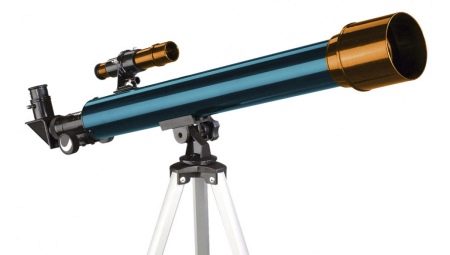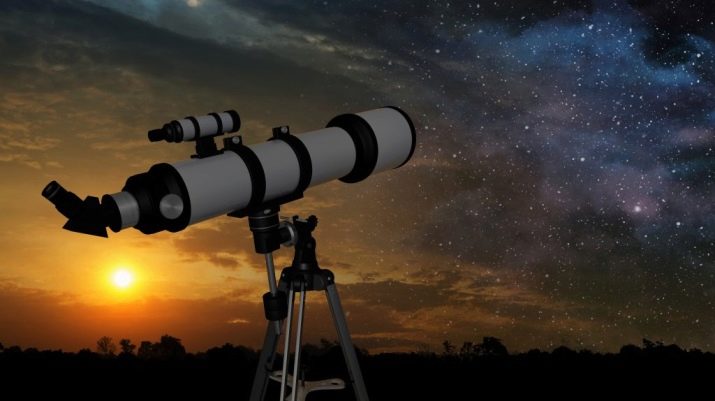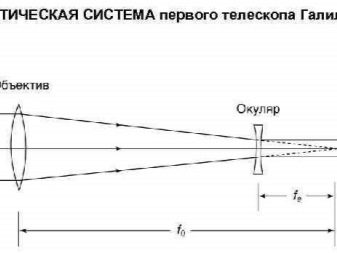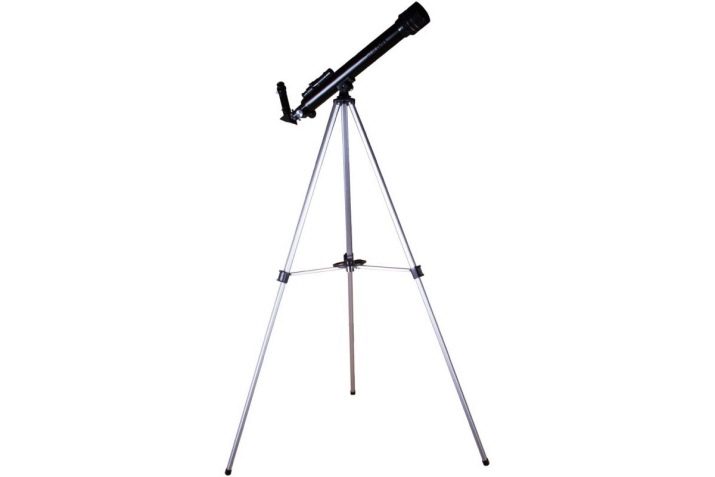All About Refractor Telescopes

What association do most people have with the word "telescope"? Most likely, they imagine a lens refractor - a long tube and a lens. That is why today we will dwell in more detail on this type of optical technology.

What it is?
First, a little theory. The purpose of the telescope is to maximize and clearly visualize the object of observation. All devices are subdivided into reflectors and refractors. The simplest technique is a refractor. Their principle of operation is based on the refraction of light at the moment the rays pass through the lens.


The simplest models include a pair of lenses. One of them acts as a lens, which is responsible for the refraction of the rays and their subsequent fixation at a single point. The other is nothing more than an ordinary eyepiece, which allows you to view the resulting image.
Thus, the lens of a telescopic device gives a greatly reduced visualization of an object in the distance. From there, the picture enters the eyepiece, which works like a magnifying glass. In some models, the eyepiece is not positioned along the axis of the tube, but is mounted perpendicularly. In this case, the picture from the lens goes to the eyepiece through the refractive lens.


You need to understand the difference between a refractor and a reflector telescope. The main component of the reflector is a concave mirror. It combines all the beams into a single beam, and then, using a system of additional mirrors and prisms, redirects it to the eyepiece. A number of models here also offer a perpendicular eyepiece fitted with a refractive lens.


The refractor is considered to be the simplest telescope model.Outwardly, it is easily recognizable - it is a small elongated tube. One end is slightly widened, in this place the receiving lens is located.
Such models do not need additional configuration. All that is required of the user is focusing. At the same time, the optical aperture is limited, which makes it difficult to observe weakly luminous celestial bodies. It is best to view the Moon, paired stars and planets through a refractor on a clear night.

A number of factors are attributed to the benefits of refractors.
-
The ability to convey the lion's share of the collected light rays to the eyepiece. This compares favorably with mirror reflectors.
-
With the same lens diameter, the picture in refractors is clearer and brighter than in reflectors. This is due to the higher light transmittance.
-
Refractors do not provide for a secondary mirror, it hides part of the useful space of the lens... Moreover, the path of light rays is directed directly into the eyepiece. It does not reflect multiple times from mirrors, therefore, the clarity and contrast of the picture does not deteriorate.
-
All parts are firmly in place, so the lenses do not need to be adjusted. The case is firmly closed - this creates an effective protection against dust. Reflectors are deprived of such an advantage.

At the same time, refractors have their drawbacks.
First of all, this is the so-called chromatism - chromatic aberration, that is, distortion. The effect manifests itself in the appearance of a colored glow around the object in question. The brighter the heavenly body shines, the higher this radiance will be. In addition, chromatism increases in direct proportion to the diameter of the lens, and it also increases with decreasing focal length.
This phenomenon has led to the fact that high magnification is not available on inexpensive refractor models. The first astronomers tried to combat chromatic aberration by creating telescopes in which the focal length was several meters.

By the way, this point can be kept in mind when choosing a telescope. The longer the tube, the better the picture will be.
Refractors are characterized by a limited aperture. Therefore, it is advisable to purchase a model whose diameter starts from 120 mm or more. However, starting from this threshold, the cost of optics jumps sharply. And if the aperture is small, deep space objects will look dull. That is why the scope of refractors is limited to bright objects, such as the moon.

History of creation
The first model of a telescopic refractor was created back in 1609 by the famous scientist Galileo. The famous astronomer learned about the creation of a telescope by the Dutch, was able to calculate the secret of its device, and on its basis he invented the first model of a telescope, which people began to use to get acquainted with the heavenly bodies. The aperture of this device was 4 cm, the magnification factor was 3, and the focal length was about 50 cm.

The model was improved a little later. The aperture of the second refractor was already 4.5, the focal length was 125 cm, and the magnification reached 34.
Of course, that model cannot be called perfect. In terms of its technical parameters, it lags far behind modern optics. But, despite this, in the first two years of observing the sky, Galileo was able to find spots on the Sun, mountains on the Moon, as well as 4 satellites of Jupiter. He also saw a couple of "appendages" of the planet Saturn. True, the scientist was not able to establish the nature of such an amazing phenomenon - it was later proved that these are rings surrounding the planet.



Types of telescopes
For 4 centuries, refractor telescopes have been repeatedly improved and modernized. Modern devices are very different from the first models. Let's get acquainted with the most famous versions.
Galilee
Galileo's telescope design was based on the use of two lenses. The diffuser acted as an eyepiece, the collecting one was used as an objective. This structure made it possible to obtain an inverted upright picture. However, it was severely distorted. Today, such a model is not in demand, although it can be found in theater binoculars.


Kepler
In 1611, Johannes Kepler slightly improved on Galileo's invention. To do this, he changed the diffusing lens in the eyepiece to a collecting one - thus the field of view was increased, but the image was transmitted upside down. The advantages of the Kepler refractor include the presence of an intermediate picture, its plane made it possible to place a measurement scale in the device.


At its core, all modern telescope models are built on the Kepler tube type. Their disadvantages include only the effect of chromatic aberration, which for many years they have been trying to level out by reducing the relative aperture of the pipe.

Achromat
The situation changed in 1758, when refractors-achromats were created in England.... The Galileo scheme was taken as a basis, but the lenses were replaced - the design of achromatic optics provides for a special paired lens with different refractive parameters. This made it possible to largely eliminate chromatic aberration.

However, this did not fully solve the problem, the iridescent edging remained noticeable.
Apochromat
The most modern instruments are apochromatic telescopes.... They are much more expensive than achromats, so no one used them until the 20th century. They provide high quality images, this effect is achieved through the use of special expensive materials. Improved techniques have minimized achromatism. Only the trained eye of a person who often observes space can see a thin edging - and then, only under unfavorable observation conditions.

Popular models
Let us dwell in more detail on the characteristics of the most popular models of refractor telescopes.
Veber 360/50 AZ
This telescope will be an excellent present for people taking their first steps in astronomy.... It provides an un-inverted image and mounts to an easy-to-use azimuth mount. The model is suitable for exploring the planets of the solar system, studying lunar craters and getting acquainted with terrestrial landscapes. Allows you to see deep space, but the picture is less detailed.


Provides a magnification ranging from 18x to 90x. Differs in small dimensions and low weight. The model is mobile and easy to use; a hard case is included in the package for transportation and storage.
Levenhuk Skyline BASE 50T
Another model for children or novice astronomers, optimal for the first acquaintance with the heavenly bodies. The telescope is easy to assemble, includes all basic refractor control accessories, and even children can learn to operate. Powerful optics allows you to observe the planets, the Moon and ground objects.

The lenses are enlightened, made of glass. Due to this, the picture, even at significant magnification, is contrasting and clear. To study space objects, an optical finder is used in a fivefold approximation. This refractor turns the picture upside down. Therefore, the kit additionally includes a diagonal electric mirror, which allows you to correct image distortion.

The azimuth mount is easy to operate and allows the refractor to be pointed at the object of study as quickly as possible. Optical equipment is fixed on a metal tripod with adjustable legs, so an observer of any height can adjust the telescope for himself. In addition to the tripod, a block for accessories is attached; it can accommodate a compass, a map of the starry sky, as well as additional eyepieces and other items necessary for work.

Konus Konuspace-4 50/600 AZ
An easy-to-use telescope that can be used like a regular spotting scope. Allows you to see the Moon and ground objects well. The advantage of the model lies in the large number of veneers and other accessories, so there is no need to buy them additionally.

The use of such a telescope allows a novice scientist to learn how to navigate the sky and get a basic understanding of the functioning of optical technology.
The PolarStar II 700 / 80AZ model is very popular.

Modern largest devices in the world
The record holder for dimensions among all refractor telescopes is the model assembled in Paris in 1900 for the World Exhibition... The diameter of its objective was 1.25 m, and the length of the tube itself exceeded 60 m.However, due to the heavy weight and colossal dimensions, the optical device was fixed horizontally and statically - this did not allow observation, therefore, after 9 years, the product was disassembled.

The largest modern telescope is a model housed at the Yerkes Observatory in Chicago. The size of the objective lens corresponds to 1.1 m, this technique allows you to study even objects of the solar system that are very distant from the Earth. The refractor was manufactured in 1897, at the same time the Yerkes Observatory was opened.

Large refractory telescopes are also located at: Potsdam Astrophysical Institute, Lick, Pulkovo, Greenwich Observatories, as well as in Nice, Archenhold and Allegheny. The James Clark Maxwell Telescope, located in the state of Hawaii, USA at an altitude of 4200 m, is well known.













